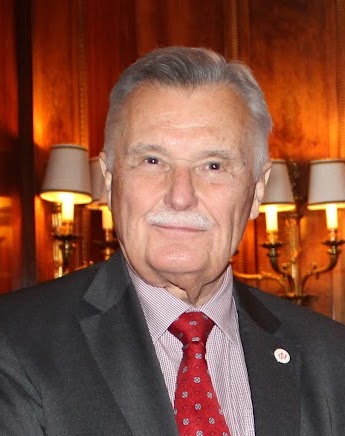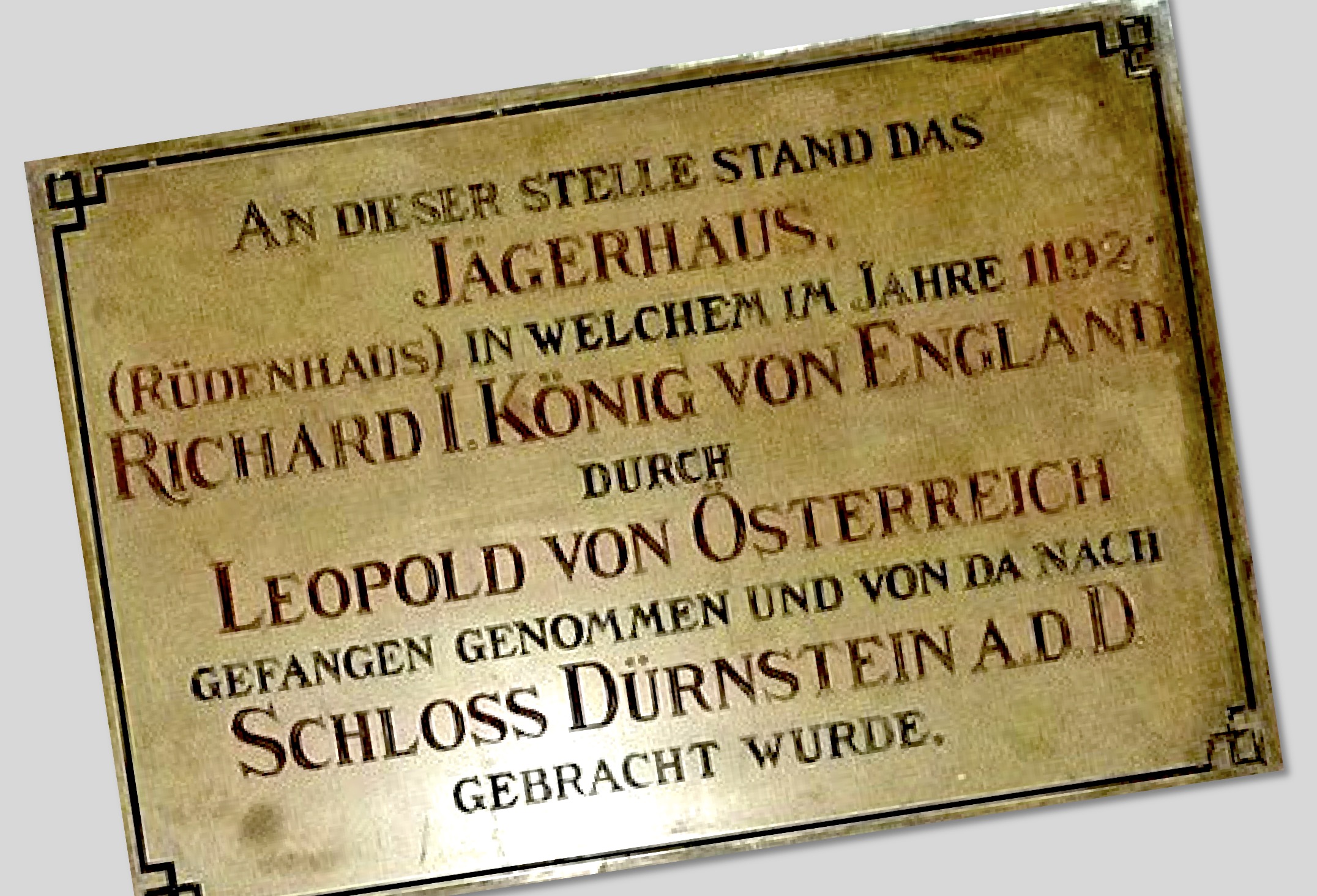BY WOLFGANG GEISSLER
First published on December 8, 2021 – Revised on September 5, 2024
Introductory Remark
English boys, so a dear friend from England tells me, grew up in the 1950s with certain unwavering beliefs: Richard was good, John was bad, and the tales of Robin Hood were as much a part of their upbringing as tea and cricket. The narrative of a heroic King Richard, unjustly imprisoned, and the legendary minstrel Blondel, who played a pivotal role in his rescue, was ingrained in their minds. This romanticized version of history was reinforced by tales and films like King Richard and the Crusaders, which I shall mention later. It takes time to come to terms with the idea that what one was taught as a child may not necessarily reflect the full truth. Yet, there are many who, even today, still hold fast to these stories from their youth. The time has come to re-evaluate these historical figures, just as England has begun to reassess other so-called ‚heroes‘ such as Colston and Cecil Rhodes.
Once upon a time, when schools still had classes on Saturdays and cinemas featured matinees, our English professor shepherded forty-two excited fourth-formers to the Bürgerkino on Landstraßer Hauptstraße in Vienna’s third district.
It was 1958, and the film was the 1954 flop King Richard and the Crusaders, shown in English with German subtitles. Intended to be both educational and to boost our English skills, the film’s subtitles are what I remember most – which isn’t much; the not-so-riveting dialogue was lost on me. Just as well.
You’d think that with a cast featuring Rex Harrison, Laurence Harvey, George Sanders, and Virginia Mayo, and with a director like David Butler, the film couldn’t go wrong. Yet, it did – so much so that it made it into the 1978 book The Fifty Worst Films of All Time. The film is supposedly about „Good King Richard“ during the Crusades, but while it’s accurate in a few ways, much of it is pure hogwash. Notably, the idea from Sir Walter Scott that King Richard I (also known as „The Lionhearted“) was a good and just man. In reality, he was one of the most vicious and cruel kings in English history – more interested in splitting open skulls in battle than ruling his domains in England and western France. History tells us he spent hardly any time in England – just six months, to be precise. Much of his time was spent hanging out with his male friends and slaughtering entire cities – even ones that had surrendered to him! After the victory at Acre, Richard ordered the execution of 3,000 unarmed Muslim prisoners who had been held as hostages. By any standard, he was a bloodthirsty maniac – except, of course, by Sir Walter Scott’s, whose monument adorns Edinburgh’s Princes Street!
Though I didn’t grasp much of the original English dialogue back in 1958, I was impressed by the impeccable pronunciation from Richard’s royal mouth. Little did I know that Monsieur Cœur de Lion never spoke English, but only his native French and Occitan. English as the language of England was only widely spoken from the 13th century onwards. Astonishingly, the Anglo-Saxon peasants and their elitist rulers couldn’t understand each other. From early on, it seems, language separated the classes. Not much has changed since. It wasn’t just Hollywood movies that got it wrong, but also Sir Walter Scott. In his case, I think it’s a bit of alternative facts or English propaganda.
The film is partially based on historical events, though the actual deeds went as follows: Richard and his forces aided in the capture of Acre. Eventually, Conrad of Montferrat concluded the surrender negotiations with Saladin’s forces inside Acre and raised the banners of the kings of England and France in the city. Richard quarrelled with Duke Leopold V of Austria over his position within the crusade because Leopold’s flag had been raised alongside the English and French standards. This was interpreted as arrogance by both Richard and Philip, as Leopold was a vassal of the Holy Roman Emperor. Richard’s men tore the flag down and threw it into the moat of Acre. Naturally piqued, Leopold packed his bags and left the crusade immediately.
On December 21, 1192, a Monday – presumably cold, possibly snowy – Richard the Lionheart found himself in Erdberg, about three kilometres from the walled city of Vienna. Back then, Erdberg was a remote place, apart from a fortification known as „Erdpurch“ located around today’s Kardinal-Nagl-Platz. At the corner of Schwalbengasse and Erdbergstrasse 41, where the Asian restaurant Jiang now stands (which has closed permanently and remains deserted after nearly two years), there was the „Rüdenhaus,“ where hunting hounds were kept, but it was also an inn.
Not exactly a tourist destination in the 12th century, but somehow, Richard ended up there – hungry, probably thirsty, and freezing. Whether his royal ring gave him away when he took his turn on the spit – a favourite hypothesis by historians – or whether he astonished the locals by asking for „une grande bière, s’il vous plaît,“ is not recorded. Whatever it was, someone ran the three kilometres to Duke Leopold V’s court in the city to report that Monsieur Cœur de Lion was having a roast chicken and a pint down in Erdberg. Leopold must have felt like all his Christmases had come at once and had him arrested immédiatement. Whether Dick Plantagenet, as they called him in the film I mentioned earlier, managed to finish his roast chicken before being bundled off to Dürnstein, we’ll never know. By Easter 1193, Richard I was transferred by Emperor Henry VI from Dürnstein to Speyer and then to the Trifels fortress. On February 4, 1194, Richard was finally released from custody.
Richard the Lionheart was the victim of an international conspiracy in the winter of 1192. In addition to Duke Leopold, Richard’s mortal enemy French King Philip II Augustus, Holy Roman Emperor Henry VI, and Richard’s brother John were involved. While in captivity, the warrior Richard also revealed unexpected traits – he even wrote a song, apparently in deep depression. In it, he not only lamented his fate but also used it to his advantage. With the help of the fastest media channel of its time – the Troubadours – Richard’s call for ransom contributions went viral in a very short time. The ransom that Richard had to raise for his release – around €3 billion in today’s value – left a significant mark on Austria. The cities of Wiener Neustadt and Friedberg were founded, Vienna and Enns were fortified, and a massive fortress in Hainburg on the Danube was built.
The third district of Vienna, Landstrasse, consisting of three parts: Weissgerber, Landstrasse, and Erdberg, features heavily in this story, which is no coincidence. I was born (1943) and grew up here. Post-war, from 1945 to 1955, Landstrasse was under British occupation. In 1958, we boys were indeed taken to watch King Richard and the Crusaders at the Bürgerkino on Landstrasser Hauptstraße, of which I remember precious little. And so, we have come full circle with this fascinating account of Leopold and Dick Plantagenet – a tale dramatically associated with Erdberg, just a ten-minute walk from where I live, on that cold Monday, December 21, 1192.
The Austro-British Society is looking forward to your views and comments!








Wonderful story. Richard famously remarked that he would have sold England if he could find a buyer, just imagine. Good that he was released in the end. His coat of arms the three lions still adorns English football shirts.
GROSSARTIG!!!!!!!!!SO LIEBE ICH KULTUR-GESCHICHTE
BITTE ALS ERWEITERTEN DIAVORTRAG IN DER ABS ZU HALTEN
DANK UND HOCHACHTUNG
PETER POLTERAUER